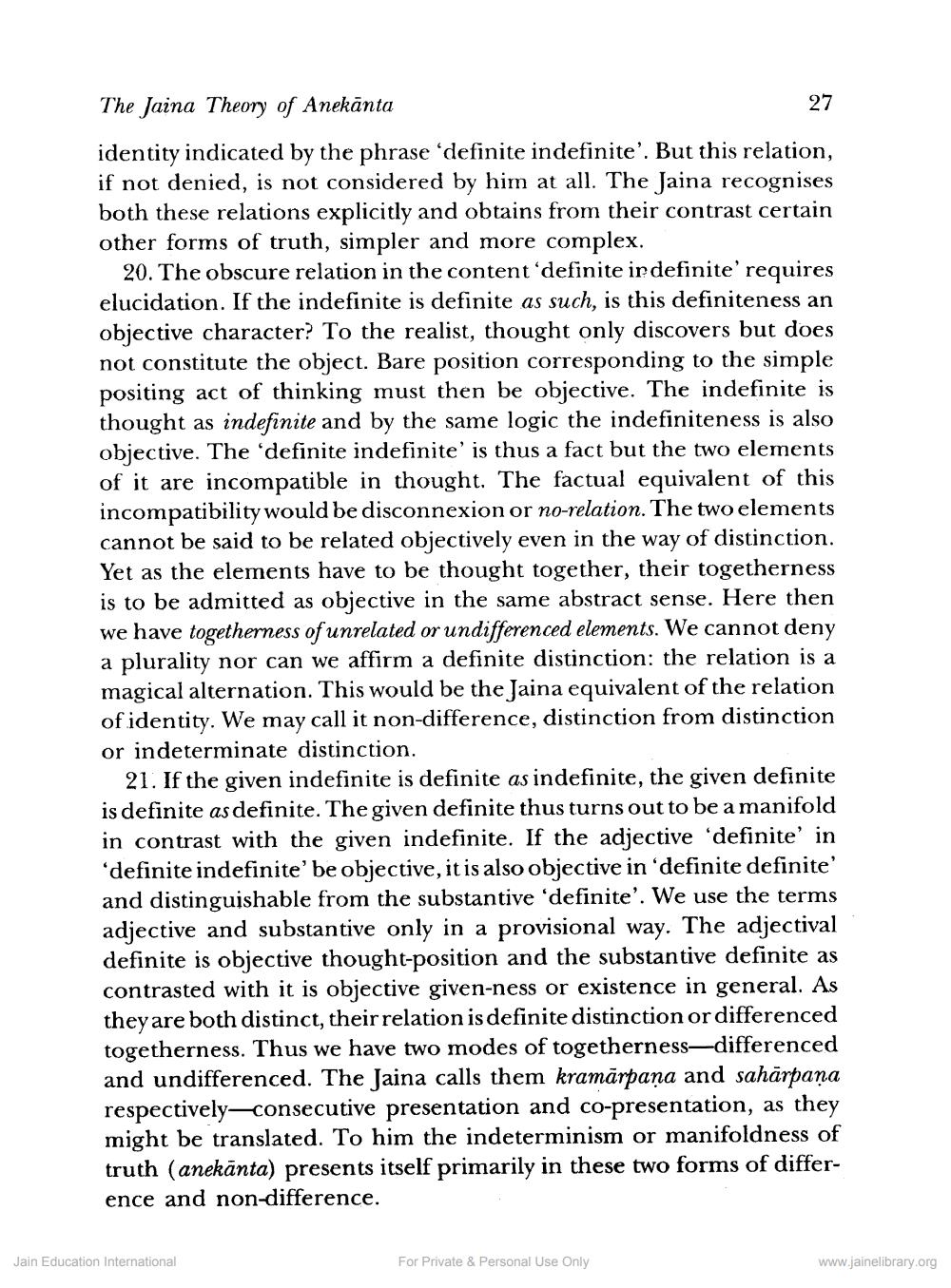________________
The Jaina Theory of Anekānta
27
identity indicated by the phrase 'definite indefinite'. But this relation, if not denied, is not considered by him at all. The Jaina recognises both these relations explicitly and obtains from their contrast certain other forms of truth, simpler and more complex
20. The obscure relation in the content 'definite in definite' requires elucidation. If the indefinite is definite as such, is this definiteness an objective character? To the realist, thought only discovers but does not constitute the object. Bare position corresponding to the simple positing act of thinking must then be objective. The indefinite is thought as indefinite and by the same logic the indefiniteness is also objective. The 'definite indefinite' is thus a fact but the two elements of it are incompatible in thought. The factual equivalent of this incompatibility would be disconnexion or no-relation. The two elements cannot be said to be related objectively even in the way of distinction. Yet as the elements have to be thought together, their togetherness is to be admitted as objective in the same abstract sense. Here then we have togetherness of unrelated or undifferenced elements. We cannot deny a plurality nor can we affirm a definite distinction: the relation is a magical alternation. This would be the Jaina equivalent of the relation of identity. We may call it non-difference, distinction from distinction or indeterminate distinction.
21. If the given indefinite is definite as indefinite, the given definite is definite as definite. The given definite thus turns out to be a manifold in contrast with the given indefinite. If the adjective 'definite' in 'definite indefinite' be objective, it is also objective in definite definite' and distinguishable from the substantive 'definite'. We use the terms adjective and substantive only in a provisional way. The adjectival definite is objective thought-position and the substantive definite as contrasted with it is objective given-ness or existence in general. As they are both distinct, their relation is definite distinction or differenced togetherness. Thus we have two modes of togetherness—differenced and undifferenced. The Jaina calls them kramārpaņa and sahārpana respectively-consecutive presentation and co-presentation, as they might be translated. To him the indeterminism or manifoldness of truth (anekānta) presents itself primarily in these two forms of difference and non-difference.
Culon.
Jain Education International
For Private & Personal Use Only
www.jainelibrary.org




